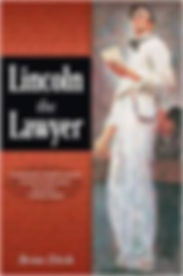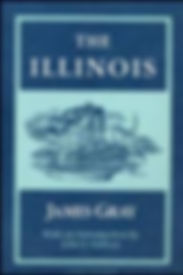Corn Kings and One-Horse Thieves
Odds & ends

Illinois past and present, as seen by James Krohe Jr.
The Corn Latitudes
Running the City Machine
The failed hopes of commission reform
Illinois Times
September 16, 1977
In 1911 a coalition of civic-minded reformers in Springfield contrived to persuade a modest majority of voters to abandon its wards and aldermen and replace them with the then-fashionable commission form of municipal government. It proved to be an improvement in several ways, although not in any of the ways the reformers hoped. Because of that failure, a new generation of reformers went back to drawing board, which sparked discussions that lasted a decade in the 1970s and '80s.
Springfieldians, as a rule, don't care much for the way their city is run. There is widespread dissatisfaction with the commission form of government under which the city has been governed since 1911. A State Journal-Register poll of June 1973 showed only the barest majority of those polled (52 percent) favored the commission form; a similar survey done in April of this year revealed that only 56 percent favored retaining it. Those unhappy with the commission government are a minority, but they are a sizable and a vocal one.
So far, unhappily, the debate about city government and the various alternatives to it has been unilluminating. The three local organizations most active in the debates—the local League of Women Voters, the Springfield East Association, and Sangamon State University's Center for the Study of Middle-size Cities—have each, for reasons of policy or prudence, taken a scrupulously noncommittal approach. Debate (more a discussion really) has dealt largely with the mechanics of government rather than its operation—with how the machine is built, in short, rather than who is running it or how.
Case in point: nonpartisanship. Parties were regarded by many early twentieth-century reformers as little more than rival gangs and elections a ritual to determine the dividing of the spoils. Eliminate the parties from city politics, the reformers argued, and you eliminate political partisanship. The hope was to make each candidate accountable to the People, not the Party. The commission form therefore is officially nonpartisan. Candidates for the five council seats run without party labels.
The reformers, typically, did not study the patient closely enough before prescribing a cure. The spirit of partisanship was not killed by the commission reform; it was merely, like a bacterium developing a resistance to a new antibiotic, changed and in some ways strengthened by it. The result was not nonpartisan city government in Springfield but bipartisan city government.
Obligingly relieved by the reformers of the need to stand as Democrats or Republicans, many commissioners found themselves free to work both sides of the political street, drawing support from both major parties and dispensing rewards in the form of the usual jobs, licenses, and the like to both in return. Instead of reducing the scope of partisan politics, the commission reform enlarged it.
Since the two parties at the local level were not separated by ideologies, they had no principled objections to such coalitions. Indeed they favored them, since it enabled them to trade the stable diet of patronage of a bipartisan machine to the feast-or-famine fare of a strictly partisan one.
The best recent example of the bipartisan machine was that assembled by the late John Hunter, commissioner of public property between 1947 and 1955 and again from 1959 to 1972. Hunter's payroll was studded with precinct committeemen of both parties and heads of key union locals, and the considerable resources of the department were made available, discreetly, to candidates of both parties. Every election season, alert citizens noted gray CWLP pickup trucks laden with yard signs painted by CWLP crews in the CWLP paint shop—some plugging a Republican candidate for this office, some plugging the Democratic man for that office. Hunter was a very popular man who knew how to make and keep friends, as his vote totals over twenty years proved.
Ironically, a second feature of the commission form popular with reformers, the election of commissioners on a city-wide, at-large basis, increased the partisan pressures on the system's ostensibly nonpartisan candidates. It was impossible for lone candidates to single-handedly campaign all over town. They needed help, organized help, to pass out the flyers and ring the doorbells, help that the parties with their squads of precinct committeemen were uniquely equipped to provide. Such help usually had a price. Though television now provides the same kind of service the parties used to furnish, the manpower needs of city-wide campaigns still make the parties useful, if no longer essential, allies.
Not all candidates worked this way, of course. Some quietly kept their allegiance to a single party; others, like Willis Spaulding, were genuinely nonpartisan. Often the nonpartisan nature of the system worked to the advantage of city and candidate alike; Nelson Howarth. nominally a Republican, always drew much of his strength from Democratic precincts, something he may not have been able to do had he run under the Republican banner.
Often the partisanship of party is replaced by the partisanship of personality. Traditionally, the election of a new head of a department has led to a housecleaning of held-over loyalists. Civil service has reduced the scope of such firings but they still go on, with predictable effects on management continuity. Whether they are done in retaliation for party or personal loyalty is of little consequence to the voters.
Nonpartisanship has not lived up to the reformers' hopes. To note this is not necessarily to endorse its alternative, however—only to caution that, especially in politics, it's easier to talk of change than to accomplish it. ●
SITES
OF
INTEREST
Essential for anyone interested in Illinois history and literature. Hallwas deservedly won the 2018 Lifetime Achievement Award from the Illinois State Historical Society.
One of Illinois’s best, and least-known, writers of his generation. Take note in particular of The Distancers and Road to Nowhere.
See Home Page/Learn/
Resources for a marvelous building database, architecture dictionary, even a city planning graphic novel. Handsome, useful—every Illinois culture website should be so good.
The online version of The Encyclopedia of Chicago. Crammed with thousands of topic entries, biographical sketches, maps and images, it is a reference work unmatched in Illinois.
The Illinois chapter of the American Institute of Architects in 2018 selected 200 Great Places in Illinois that illustrate our shared architectural culture across the entire period of human settlement in Illinois.
A nationally accredited, award-winning project of the McLean County Historical Society whose holdings include more than 20,000 objects, more than 15,000 books on local history and genealogy, and boxes and boxes of historical papers and images.
Mr. Lincoln, Route 66, and Other Highlights of Lincoln, Illinois
Every Illinois town ought to have a chronicler like D. Leigh Henson, Ph.D. Not only Lincoln and the Mother road—the author’s curiosity ranges from cattle baron John Dean Gillett to novelist William Maxwell. An Illinois State Historical Society "Best Web Site of the Year."
Created in 2000, the IDA is a repository for the digital collections of the Illinois State Library and other Illinois libraries and cultural institutions. The holdings include photographs, slides, and glass negatives, oral histories, newspapers, maps, and documents from manuscripts and letters to postcards, posters, and videos.
The people's museum is a treasure house of science and the arts. A research institution of national reputation, the museum maintains four facilities across the state. Their collections in anthropology, fine and decorative arts, botany, zoology, geology, and history are described here. A few museum publications can be obtained here.
“Chronicling Illinois” showcases some of the collections—mostly some 6,000 photographs—from the Illinois history holdings of the Abraham Lincoln Presidential Library.
I will leave it to the authors of this interesting site to describe it. "Chicagology is a study of Chicago history with a focus on the period prior to the Second World War. The purpose of the site is to document common and not so common stories about the City of Chicago as they are discovered."
Illinois Labor History Society
The Illinois Labor History Society seeks to encourage the preservation and study of labor history materials of the Illinois region, and to arouse public interest in the profound significance of the past to the present. Offers books reviews, podcasts, research guides, and the like.
Illinois Migration History 1850-2017
The University of Washington’s America’s Great Migrations Project has compiled migration histories (mostly from the published and unpublished work by UW Professor of History James Gregory) for several states, including Illinois. The site also includes maps and charts and essays about the Great Migration of African Americans to the north, in which Illinois figured importantly.
An interesting resource about the history of one of Illinois’s more interesting places, the Fox Valley of Kendall County. History on the Fox is the work of Roger Matile, an amateur historian of the best sort. Matile’s site is a couple of cuts above the typical buff’s blog. (An entry on the French attempt to cash in on the trade in bison pelts runs more than
2,000 words.)
BOOKS
OF INTEREST

Southern Illinois University Press 2017
A work of solid history, entertainingly told.
Michael Burlingame,
author of Abraham
Lincoln: A Life
One of the ten best books on Illinois history I have read in a decade.
Superior Achievement Award citation, ISHS Awards, 2018
A lively and engaging study . . . an enthralling narrative.
James Edstrom
The Annals of Iowa
A book that merits the attention of all Illinois historians
as well as local historians generally.
John Hoffman
Journal of Illinois HIstory
A model for the kind of detailed and honest history other states and regions could use.
Harold Henderson
Midwestern Microhistory
A fine example of a resurgence of Midwest historical scholarship.
Greg Hall
Journal of the Illinois
State Historical Society
Click here
to buy the book
Southern Illinois University Press
SIU Press is one of the four major university publishing houses in Illinois. Its catalog offers much of local interest, including biographies of Illinois political figures, the history (human and natural) and folklore of southern Illinois, the Civil War and Lincoln, and quality reprints in the Shawnee Classics series.
The U of I Press was founded in 1918. A search of the online catalog (Books/Browse by subject/Illinois) will reveal more than 150 Illinois titles, books on history mostly but also butteflies, nature , painting, poetry and fiction, and more. Of particular note are its Prairie State Books, quality new paperback editions of worthy titles about all parts of Illinois, augmented with scholarly introductions.
The U of C publishing operation is the oldest (1891) and largest university press in Illinois. Its reach is international, but it has not neglected its own neighborhood. Any good Illinois library will include dozens of titles about Chicago and Illinois from Fort Dearborn to
Vivian Maier.
Northern Illinois University Press
The newest (1965) and the smallest of the university presses with an interest in Illinois, Northern Illinois University Press gave us important titles such as the standard one-volume history of the state (Biles' Illinois:
A History of the Land and Its People) and contributions to the history of Chicago, Illinois transportation, and the Civil War. Now an imprint of Cornell University Press.




Reviews and significant mentions by James Krohe Jr. of more than 50 Illinois books, arranged in alphabetical order
by book title.
Run by the Illinois State Library, The Center promotes reading, writing and author programs meant to honor the state's rich literary heritage. An affiliate of the Library of Congress’s Center for the Book, the site offers award competitions, a directory of Illinois authors, literary landmarks, and reading programs.
